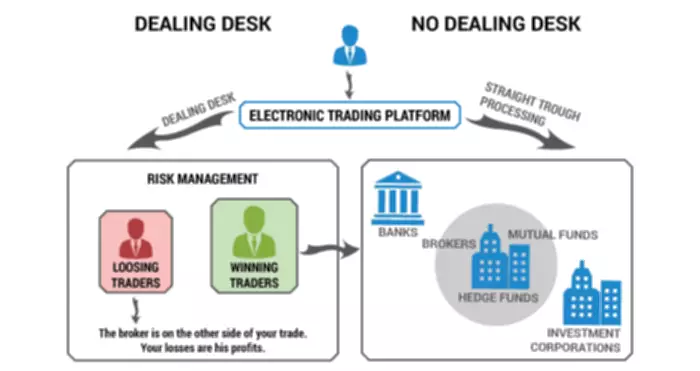Content
In concurrent multiscale modeling, the quantities needed in the macroscale model are computedon-the-fly from the microscale models as the computation proceeds. In this setup, the macro- and micro-scale models are used concurrently. If one wants to compute the inter-atomic forces from the first principle instead of modeling them empirically, then it is much more efficient to do this on-the-fly.

Perhaps the most natural choice should be the mass of an electron. This makes the system stiffsince the time scales of the electrons and the nuclei are quite disparate. However, since we are only interested in the dynamics of the nuclei, not the electrons, we can choose a value which is much larger than the electron mass, so long as it still gives us satisfactory accuracy for the nuclear dynamics.
Constructive Quantum Field Theory
Scale invariance, fractal statistics, the fractal dimension and measures of selfsimilarity also provide insight into the relationship between scales within a system. For example, these techniques may reveal limits to the utility of averages, the dependence of a measure on the scale of measurement, and the mutual information between scales of a system. The description of a complex system cannot be reduced to just a description of the fine scale details, because this ignores the emergent properties at larger scales. Several proposals have been made regarding general methodologies for designing multiscale algorithms.
Even though the polymer model is still empirical, such an approach usually provides a better physical picture than models based on empirical constitutive laws. When studying chemical reactions involving large molecules, it often happens that the active areas of the molecules involved in the reaction are rather small. The rest of the molecules just serves to provide the environment for the reaction. In this case, it is natural to only treat the reaction zone quantum mechanically, and treat the rest using classical description. Such a methodology is called the QM-MM (quantum mechanics-molecular mechanics) method . Graduate students and research mathematicians interested in applications of PDE to material sciences.
Quantum mechanics – molecular mechanics (QM-MM) methods
These two thermodynamic functions will thus be employed as “measurements” resp. Coupling quantitites in the Bayesian inference used to identify the macro-scale model parameters given the meso-scale response stored energy and dissipation. This approach is also a good start for computational procedures (e.g. ), and has https://xcritical.com/ for some specific subset of materials been given a fully variational formulation in a Hilbert space context . This description has been subsequently extended to much more general cases for the here interesting case of rate-independent behaviour . Most of the previous work used object tracks to model the scene.
This allows for faster scanning at a lower dose, increasing the accuracy and amount of information obtained. MicroCT observations can provide resolution as low as 400 nm, making it an ideal tool for non-destructive surveying of the sample prior to higher resolution characterization. Quantiles of energy for linear displacement , periodic and uniform tension boundary conditions. According to these results, linear displacement defines the upper bound on the estimated energy, whereas uniform tension gives its lower limit. On the other hand, variations of the energies are similar for all three types of boundary conditions, and are inverse proportion to the number of inclusions. This is considered in the following “Approximation of the meso-scale observation by unsupervised learning” section.
With increase of the correlation length the damage is more pronounced, and hence one expects higher variations. In addition, one may also conclude that the corresponding PDFs are becoming more skewed when the material model approaches the homogeneous case, see Fig.17. The skewness in terms of long tails is not completely caused by variations of the random meso-scale, but also by the inaccuracy of the variational method used for the PCE estimation of the measurement due to possible overestimation. Renormalisation operates by abstracting interdependencies between fine scale variables into interdependencies between coarse scale variables, and can be applied recursively.
For this reason, the effective operators used at each level can all be regarded as an approximation to the original operator at that level. In recent years, Brandt has proposed to extend the multi-grid method to cases when the effective problems solved at different levels correspond to very different kinds of models . For example, the models used at the finest level might be molecular dynamics or Monte Carlo models whereas the effective models used at the coarse levels correspond to some continuum models. Brandt noted that there is no need to have closed form macroscopic models at the coarse scale since coupling to the models used at the fine scale grids automatically provides effective models at the coarse scale. Brandt also noted that one might be able to exploit scale separation to improve the efficiency of the algorithm, by restricting the smoothing operations at fine grid levels to small windows and for few sweeps.
Arable soil nitrogen dynamics reflect organic inputs via the extended … – Nature.com
Arable soil nitrogen dynamics reflect organic inputs via the extended ….
Posted: Fri, 23 Dec 2022 16:18:24 GMT [source]
To reduce the overall computational cost, a model reduction of the meso-scale simulation is achieved by combining unsupervised learning techniques based on a Bayesian copula variational inference with functional approximation forms. In the literature stochastic homogenisation is usually performed on an ensemble of RVEs in order to extract the relevant statistical QoI . For example, in , the moving-window approach is used to characterise the probabilistic uni-axial compressive strength of random micro-structures. Another active direction of research is to develop stochastic surrogate models for strain energy of random micro-structures as in .
Approximation of the meso-scale observation by unsupervised learning
To exclude sensitivity to size, the operators used can generally not be increasing, as was shown in Urbach & Wilkinson and Urbach et al. Original image consisting of squares of different sizes; pattern spectrum using structural opening; pattern spectrum using opening-by-reconstruction, by λ × λ squares. However, this analytical approach has enormous potential value for defence science.

From Fig.6b one may conclude that with the smaller measurement set by using only 10 samples our confidence about the estimated PDF is lower than in case of higher number of measurements, as expected. Similarly, their complete conditionals given all other variables and observations are also assumed to belong to exponential families, and are assumed to be independent. Obviously these assumptions lead to conjugacy relationships, and closed form solution of Eq. This also gives the right kind of mean—the geometric mean—for positive quantities.
In this paper, a multi-scale computational approach is employed to investigate the shear behaviour of crushable granular sand under general stress conditions with varying intermediate principal stresses and confining pressures. The computational approach features multi-scale coupling between non-smooth contact dynamics and peridynamics, and offers a rigorous way to consider the intertwined evolution of particle size and shape during the process of grain crushing. The competition between a void-filling mechanism due to grain size change and enhanced friction and interlocking due to grain shape change in dictating the deformation of crushable sand is further discussed. The findings offer insights into the complex behaviours of crushable granular materials under general stress conditions and facilitate future development of physics-based constitutive theories on crushable sand. The aforementioned DOE multiscale modeling efforts were hierarchical in nature.
The heterogeneous multiscale method (HMM)
Multiscale decision-making draws upon the analogies between physical systems and complex man-made systems. The meso-scale characteristics are upscaled in a Bayesian manner to the coarse scale homogeneous isotropic finite element described by material properties taking the form of a posteriori random variable as schematically shown in Fig.2. To gather as much as information as possible in observation data, we consider different types of loading conditions including pure shear or compression, or their combination as shown in Fig.2. The estimate would require too many data points as thousands of input parameters can easily be involved in the description of the meso-scale properties. Therefore, we use an unsupervised learning algorithm to reduce the stochastic dimension of the meso-scale measurement, as further described in “Approximation of the meso-scale observation by unsupervised learning” section. The first type are problems where some interesting events, such as chemical reactions, singularities or defects, are happening locally.
- Is found, and the measurement data are represented in a functional form, as discussed in “Bayesian upscaling of random meso-structures” section.
- The evolution of wavelet has been succinctly delineated to bestow necessary information to the readers who are new to this field.
- Multiscale decision-making draws upon the analogies between physical systems and complex man-made systems.
- The meso-scale characteristics are upscaled in a Bayesian manner to the coarse scale homogeneous isotropic finite element described by material properties taking the form of a posteriori random variable as schematically shown in Fig.2.
- So we need to come to a balance point so that the model becomes computationally feasible and at the same time we do not lose much information, with the help of making some rational guesses, a process called Parametrization.
- If the scale separation criterion is not satisfied, the upscaling becomes more difficult.
The target audience consists of neuroscientists, graduate students, decision-makers in funding agencies, and those scientists outside the field who are looking for significant problems to address. Specific questions the paper will address include the following. What should we measure, and what are the theoretical considerations that dictate our measurements? The paper will also address challenges facing investigators, such as obtaining longer duration multi-electrode recordings, better data processing, and a data sharing. The Group plans to submit the perspective paper to a journal by December 2011.
Related search
NIMBioS Working Groups are relatively small , focus on a well-defined topic, and have well-defined goals and metrics of success. Working Groups will meet up to 3 times over a two-year period, with each meeting lasting up to multi-scale analysis 2.5 days. For type A problems, we need to decide where fine scale models should be used and where macro-scale models are sufficient. This requires developing new style of error indicators to guide the refinement algorithms.

To the Gaussian space by the use of algorithms in “Approximation of the meso-scale observation by unsupervised learning” section. These are referred as transformed variables, and are further compared to the sample set of standard uncorrelated Gaussians in order to verify the mapping algorithm. As can be seen, the mapped Gaussians are indeed uncorrelated, and hence can be used for further approximations. On the other hand, due to the chosen experiment, both shear and hardening moduli stay unidentified as they are not observable.
Despite the fact that there are already so many different multiscale algorithms, potentially many more will be proposed since multiscale modeling is relevant to so many different applications. Therefore it is natural to ask whether one can develop some general methodologies or guidelines. An analogy can be made with the general methodologies developed for numerically solving differential equations, for example, the finite difference, finite element, finite volume, and spectral methods. These different but also closely related methodologies serve as guidelines for designing numerical methods for specific applications. The extracellular matrix is a complex mixture of structural proteins, proteoglycans, and signaling molecules that are essential for tissue integrity and homeostasis.
In this problem is approached by considering the mesh in element approach , in which the meso-scale structure is embedded in a macro-scale finite element. This allows the precise transfer of size-information between the scales. The renormalization group method is one of the most powerful techniques for studying the effective behavior of a complex system in the space of scales . The basic object of interest is a dynamical system for the effective model in which the time parameter is replaced by scale. Therefore this dynamical system describes how the effective model changes as the scale changes.
Availability of data and materials
It is interesting to note that in the compression case the mean responses of stored energies vary more than in a pure shear test. This is closely related to the way how boundary conditions are imposed. Namely, we take into consideration directly the element on which the loadings are imposed, and thus one may recognise the strong influence of boundary conditions on the obtained results. In would be better if one would take into consideration only internal elements, which are away from the boundary. This means that the averaging would be performed only over an RVE embedded in a large domain on which the boundary conditions are applied.
Multiscale simulation is an emerging scientific field that spans many disciplines, including physics, chemistry, mathematics, statistics, chemical engineering, mechanical engineering, and materials science. This review paper first defines this new scientific field and outlines its objectives. An overview of deterministic, continuum models and discrete, particle models is then given. Among discrete, particle models, emphasis is placed on Monte Carlo stochastic simulation methods in well-mixed and spatially distributed systems.
The predictive modelling of highly nonlinear and damaging material behaviour such as occurs in cementitious-like materials which are heterogeneous over a large range of scales requires realistic mathematical models. As a detailed description on the desired macroscopic level is not computationally feasible for large-scale structures, some kind of multi-scale approach is called for. In this paper simple prototypical models of macro- and meso-scale descriptions of cementitious materials will be considered. However, smaller scales can be introduced as well in order to explicitly describe heterogeneities characterising the material structure of aggregates, the mortar matrix, or the interfacial zone.
